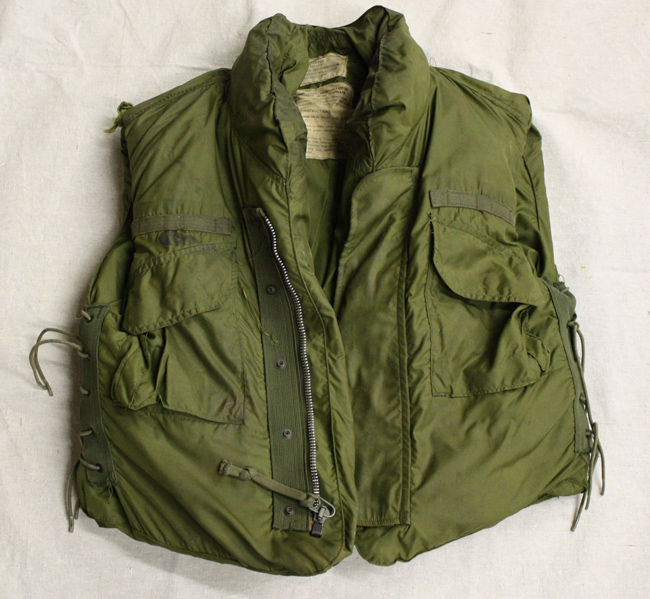Every soldier on the news in the Afghanistan theater of operations is wearing body armor. It is now policy, and modern body armor is effective but heavy and restrictive. During the Vietnam War, body armor consisted mainly of M-1951 fragmentation vests, which were also heavy but not so effective.
The M-1951 flak jacket was developed during the Korean War and was made of 12 plies of ballistic nylon. It was recognized early on as incapable of stopping bullets, or anything else other than low velocity shrapnel, It was upgraded after 1968 to the version shown here, by adding collars and rearranging the pockets, but was still the same old stuff. It was heavy at 10 pounds, and the heat of Vietnam discouraged it's use. The Marines had to wear theirs as a matter of policy, but in the Army it was usually up to the unit commanders. The helicopter guys got a version with the first ceramic plates, but rarely wore them.
Kevlar was developed just as the war ran down, and it is used in modern body armor with ceramic plates that is effective but heavy at 25 pounds. Getting shot usually entails some injury from the bullets impact, sometimes broken ribs and/or internal organ damage. BAE's work on liquid armor is trying to bring the weight down while upping the protection against rifle bullets and spreading out the impact.
